Symphony No. 6 in B minor, Op. 74 (Pathétique) – P.I. Tchaikovsky (Theme – Easy piano solo SHEET MUSIC)

Brief biography of P.I. Tchaikovsky
Pyotr Ilyich Tchaikovsky was born in 1840 and died in 1893. He is a Russian composer, and he was the son of his artistic time, Romanticism. He tackled many genres: symphonies, operas, ballets, instrumental music, chamber music, and song cycles.
Among this work stands out, without a doubt, his ballets. He created a good number of works that today make up the repertoire: Swan Lake, Sleeping Beauty, The Nutcracker . In the symphonic aspect are his symphonies, especially the last three, from the fourth to the sixth.
In concert music, we highlight his first piano concerto or his violin concerto. Among his operas, of course, is Eugene Onegin.
P.I. Tchaikovsky was born into a middle-class family. From an early age, he showed a precocious talent for music. His parents realized this and signed him up for piano lessons at the age of 5.
Three years later he was sight-reading better than his own teacher’s. However, later his parents, seeing that his son would undertake a music career, discouraged him. When it was time to study, they pushed Tchaikovsky to study law with the intention that he would become a civil servant, such was the middle-class aspiration of the family.
At the age of 14, his mother dies of cholera, a fact that produces a trauma in the young P.I. Tchaikovsky. Despite studying law due to parental obligation, Tchaikovsky remains in contact with the musical world of St. Petersburg, his hometown.
After graduating, at the age of 19, he began taking music theory classes with professors from the Russian Musical Society such as Zaremba or Rubinstein. Shortly after, he decided to abandon his career as a civil servant and dedicate himself entirely to music.
From 1867, at the age of 27, he began to compose regularly, and his works were premiered and incorporated into the repertoire promptly. However, his fame brought him jealousy problems with other musicians and composers.
In addition, P.I. Tchaikovsky began to question his homosexuality. In a society where homosexuality was clearly stigmatized, it was not easy for a composer of his fame to internalize it. At this time, Tchaikovsky decides to marry a student of his composition. The marriage is a complete failure and the composer falls into a deep depression. He decides to leave Moscow and thus begins his years of pilgrimage.
He travels, thanks to the financial support of a patron, Nadezhda von Meck, through Europe, Germany and France among other countries, and through rural Russia.
In 1884, tired of travelling, he returned to Russia, where he would remain until his death in 1893. At that time, despite his emotional problems (above all, those derived from his sexuality), he enjoyed very high public and critical recognition.
Tchaikovsky’s music
Tchaikovsky’s music represents Russia’s connection to the Western tradition of Romanticism. Russia at the time of Tchaikovsky was establishing its identity as a country. A group of composers, the so-called Group of Five , advocated the creation of authentically Russian music, that is, music with no connection to the classical European tradition, no relation to composers like Beethoven, Brahms, or Wagner.
This group wanted music that drew from the sources of Russian folklore rather than the tonal-harmonic music of the West. Tchaikovsky does not identify with that position and, in fact, his relationship with that group is ambiguous, one of rejection and recognition at the same time. During his years of pilgrimage, Tchaikovsky has been in contact with the music of Brahms, Beethoven and other composers of his time.
He has known that music first hand and incorporates it into his style. It represents the most Westernized trunk of romantic Russian music. This is not to say that Tchaikovsky rejects Russian music at all; rather, he uses a lot of folk music. Recall that part of his years of pilgrimage is spent in rural Russia.
From a more technical point of view, it can be said that Tchaikovsky was a great experimenter. Some authors have seen him as a composer who mastered all aspects of composition except form. But this is not true. He introduced innovations in form that can be seen in so many of his works, including the Sixth Symphony.
P.I. Tchaikovsky used irregular and unusual time signatures (see the second movement of the sixth, in 5/4); he used meter in a very expressive way; his way of harmonizing is bold and was innovative in his time; his sense of orchestral color is highly original and inspired other composers of the next generation (think of Stravinsky and his early ballets); his melodic ability is amazing (see melodic analysis below).
The genesis of the Symphony “Pathétique”
The Sixth Symphony was drafted in early 1893. Tchaikovsky is known to have torn up a first draft, but had promised himself “that this time I would finish by force of will”. In October 1893 he delivers the first version and begins to prepare the version for two pianos.
The title that Tchaikovsky proposes Pathétique suggests that there is a program behind the symphony. However, the composer maintains the mystery about said program.
It is clearly a symphony that admits multiple readings. Some authors study it from the point of view of an escape valve for their repressed homosexuality. Apparently, Tchaikovsky had a platonic relationship with none other than his nephew Bob, the dedicatee of the symphony. The sensuality that the symphony gives off has been interpreted as a sublimation of that forbidden love. No one is unaware that the symphony deals with the theme of fate (here the word pathétique means emotion and not ridicule).
The symphony seems to encourage the idea that somehow, perhaps within our ingenuity, we can challenge, even bet, with destiny. We oscillate between a clear understanding of our destiny, as in the despair themes of the fourth movement, to blind optimism, as in the march of the third movement, through a deep compassion for our condition, as in the theme of consolation.
The premiere of the symphony did not have the reception that Tchaikovsky expected. There was a kind of perplexity between the public and the critics. They did not understand its meaning, perhaps its formal innovations (a symphony ending in a lamenting adagio ?) were excessive.
A few days later, Tchaikovsky dies of cholera for having drunk unboiled water. There is speculation whether he committed suicide or staked his life on a drink with fate. The next time the symphony was played, it was a runaway success. It seems that the public understood the symphony after his death.
Browse in the Library:
| Artist or Composer / Score name | Cover | List of Contents |
|---|---|---|
| A dozen A Day Book 1 Technical exercises for the piano |
 |
A dozen A Day Book 1 Technical exercises for the piano |
| A dozen A Day Book 2 Technical exercises for the piano |
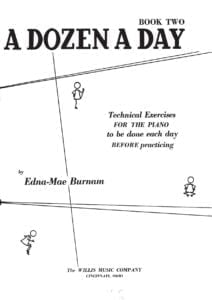 |
|
| A dozen A Day Book 3 Technical exercises for the piano |
 |
|
| A dozen A Day Book 4 Technical exercises for the piano |
 |
|
| A dozen A Day Mini Book Technical exercises for the piano |
 |
|
| A dozen Day Preparatory Book Technical exercises for the piano |
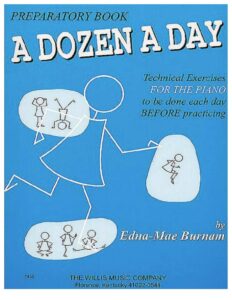 |
|
| A Farewell To Arms Love Theme From A Farewell To Arms film by Mario Nascimbene Francis Webster 1957 |
 |
|
| A Felicidade (Antonio Carlos Jobim) | ||
| A Festival Gathering Of Carols (Musescore File).mscz | ||
| A Fine Frenzy – Almost Lover |
 |
|
| A Fistful of Dollars (Ennio Morricone) | ||
| A Generative Theory Of Tonal Music by Fred Lerdahl and Ray Jackendoff (Book) |
 |
|
| A Guide To Guitar Chords by Curt Sheller |
 |
A Guide To Guitar Chords by Curt Sheller |
| A Guide To Musical Analysis by Nicholas Cook (Book) |
 |
|
| A Handbook Of Piano Playing (By Eric Hope) (1962) |
 |
|
| A Heart Full Of Love (Musescore File).mscz | ||
| A love suicide (Yutaka Minobe) | ||
| A Love Supreme (by Ashley Kahn) The story of john Coltrane’s signature album (Book) |
 |
|
| A Media Luz (Edgardo Donato) | ||
| A Modern Approach To Jazz Rock And Fusion For Guitar with Tablature |
 |
A Modern Approach To Jazz Rock And Fusion For Guitar |
| A Modern Method For Guitar (Berklee) 1 by William Leavitt |
 |
A Modern Method Berklee 1 |
| A Modern Method For Guitar (Berklee) 2 by William Leavitt |
 |
A Modern Method For Guitar (Berklee) 2 |
| A Modern Method For Guitar (Berklee) 3 by William Leavitt |
 |
A Modern Method For Guitar (Berklee) 3 |
| A MOZART REINCARNATED (Ennio Morricone) |
 |
|
| A Mozart Reincarnated by Ennio Morricone (Musescore File).mscz | ||
| A New Approach To Ear Training by Leo Kraft (BOOK) |
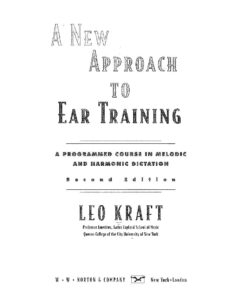 |
|
| A New Approach To Piano Technique (By Ruth A. Dickerson) (1962) |
 |
A new approach to piano technique |
| A Night In Tunisia – Dizzy Gillespie.mscz | ||
| A Pedal Method For The Piano (By Albert F Venino) (1893) |
 |
|
| A Popular Account Of Ancient Musical Instruments And Their Development by William Lynd (Book 1897) |
 |
|
| A Rockin’ Christmas Piano Vocal Guitar |
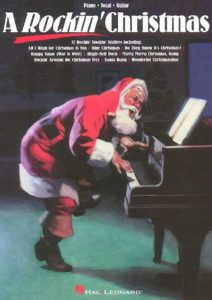 |
A Rockin’ Christmas Piano Vocal Guitar Contents — Rockin Christmas |
| A Single Man – George’s Waltz (Shigeru Umebayashi) | ||
| A Single Man – Stillness of the Mind (Abel Korzeniowski) | ||
| A Smooth Jazz Christmas – Mellow Seasonal Favorites for Piano arr. Roger House |
 |
A Smooth Jazz Christmas – Mellow Seasonal Favorites for Piano arr. Roger House |
| A Song For You – Leon Russell Ray Charles (Musescore File).mscz | ||
| A Star Is Born – Always Remember Us This Way Lady Gaga |
 |
|
| A Star Is Born – Shallow Lady Lady Gaga |
 |
|
| A Tale Of Two Sisters Ost – Epilogue Piano Solo |
 |
|
| A Thousand Years – Twilight OST (Christina Perri) | ||
| A Time For Love – Johnny Mandel |
 |
|
| A Time For Us – Guitar TABlature |
 |
|
| A Time For Us (Love Theme from Romeo and Juliet) Nino Rota |
 |
|
| A Time For Us (Romeo and Juliet OST) Nino Rota | ||
| A Touch Of Jazz 14 well-known hymns, gospel songs and contemporary praise songs by Wolaver Bill |
 |
A Touch Of Jazz 14 well-known hymns, gospel songs and contemporary praise songs by Wolaver Bill |
| A Tribute To Ella Fitzgerald Piano Vocal Guitar |
 |
A tribute to ELLA FITZGERALD |
| A Walk To Remember – Only Hope | ||
| A whiter shade of pale – Procul Harum | A whiter shade of pale – Procul Harum | |
| AaRON U-turn Lili Piano |
 |
|
| Ab Ovo – Joep Beving (Musescore File).mscz | ||
| Abba – Abba Gold – Greatest Hits |
 |
ABBA Gold Geatest Hits booksong sheet music |
| Abba – Chiquitita | ||
| Abba – Dancing Queen | ||
| Abba – Fernando | ||
| Abba – I Have A Dream | ||
| Abba – Like An Angel Passing Through My Room | ||
| Abba – Mamma Mia | ||
| Abba – Slipping Through My Fingers | ||
| Abba – Thank You For The Music | Abba-Thank-You-For-The-Music 1st page | |
| ABBA – Thank You For The Music (Piano Vocal Guitar) | ABBA – Thank You For The Music (Piano Vocal Guitar) | |
| ABBA – Thank You For the Music (Piano vocal Guitar) (Musescore File).mscz | ||
| Abba – Thank You For The Music Piano & vocal | Abba – Thank You For The Music-abba-satb | |
| Abba – The Winner Takes It All | ||
| ABBA Dancing Queen Easy Piano Solo |
 |
|
| ABBA Fernando (Piano Solo arr.) |
 |
|
| ABBA Fernando (Piano Solo arr.).mscz | ||
| ABBA Greatest Hits |
 |
ABBA GREATEST HITS SHEET MUSIC BOOK |
| ABBA I Have A Dream |
 |
|
| Abba The Very Best Vol 1 Easy Piano Hans Gunter Heumann Pop Classics For Piano |
 |
Abba The Very Best Vol 1 Easy Piano |
| Abba The Very Best Vol 2 Easy Piano Hans Gunter Heumann Pop Classics For Piano |
 |
Abba The Very Best Vol 2 Easy Piano |
| Abbey Lincoln Songbook |
 |
Abbey Lincoln Songbook |
| Abbey Lincoln Songbook Piano Vocal Guitar Chords |
 |
Abbey Lincoln Songbook Piano Vocal Guitar Chords |
| Abdullah Ibrahim – The Piano World Of |
 |
Abdullah Ibrahim, The Piano World Of |
| Abdullah Ibrahim The African Piano Of Abdullah Ibrahim Vol 1 |
 |
Abdullah Ibrahim The African Piano Of Abdullah Ibrahim Vol 1 |
| Abdullah Ibrahim The Wedding (piano solo transcription sheet music, partition) |
 |
|
| Abel Korzeniowski – Death Is My Heir (from Romeo and Juliet) |
 |
|
| ABRSM Jazz Piano Pieces Grade 1 to 5 |
 |
ABRSM Jazz Piano Pieces Grade 1 to 5 ABRSM Jazz Piano Pieces Grade 5ABRSM Jazz Piano Pieces Grade 5 |
| ABRSM Piano Exam Pieces Grade 1 (2016) |
 |
ABRSM Piano Exam Pieces Grade 1 (2016) |
| ABRSM Piano Scales, Arpeggios Grade 8 |
 |
|
| ABRSM Piano Scales, Arpeggios and broken chords Grade 1 |
 |
|
| ABRSM Piano Scales, Arpeggios and broken chords Grade 4 |
 |
ABRSM Piano Scales, Arpeggios and broken chords Grade 4 |
| ABRSM Piano Scales, Grade 2 A Guide for Students and Teachers | ABRSM Piano Scales, Grade 2 A Guide for Students and Teachers | |
| ABRSM – Time pieces for guitar vol. 1 |
 |
|
| ABRSM – Time pieces for guitar vol. 2 |
 |
|
| ABRSM 2017 18 Piano Exam Pieces Grade 1 |
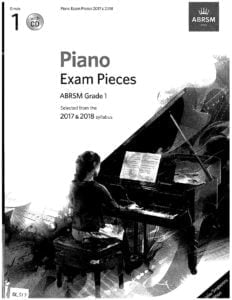 |
ABRSM 2017 18 Piano Exam Pieces Grade 1 |
| ABRSM 2017 18 Piano Exam Pieces Grade 2 |
 |
ABRSM 2017 18 Piano Exam Pieces Grade 2 |
| ABRSM 2017 18 Piano Exam Pieces Grade 3 |
 |
|
| ABRSM 2017 18 Piano Exam Pieces Grade 4 |
 |
|
| ABRSM 2017 18 Piano Exam Pieces Grade 5 |
 |
|
| ABRSM 2017 18 Piano Exam Pieces Grade 6 |
 |
|
| ABRSM 2017 18 Piano Exam Pieces Grade 7 |
 |
|
| ABRSM 2017 18 Piano Exam Pieces Grade 8 |
 |
|
| ABRSM 2021-2022 Piano Exam Pieces Grade 1 |
 |
|
| ABRSM 2021-2022 Piano Exam Pieces Grade 2 |
 |
|
| ABRSM 2021-2022 Piano Exam Pieces Grade 3 |
 |
|
| ABRSM 2021-2022 Piano Exam Pieces Grade 5 |
 |
|
| ABRSM 2021-2022 Piano Exam Pieces Grade 6 |
 |
|
| ABRSM 2021-2022 Piano Exam Pieces Grade 8 |
 |
|
| ABRSM 2021-2022 Piano Exam Pieces Initial Grade |
 |
ABRSM 2021-2022 Piano Exam Pieces Initial Grade |
| ABRSM Aural Training In Practice Book 1 Grades 1 to 3 |
 |
|
| ABRSM Aural Training In Practice Book 2 Grades 4 and 5 |
 |
|
| ABRSM Discovering Music Theory (Complete) Grades 1 to 5 Workbook by Simon Rushby (2020 Exams) |
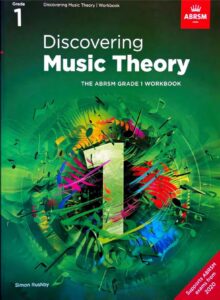 |
ABRSM Discovering Music Theory (Complete) Grades 1 to 5 Workbook by Simon Rushby (2020 Exams) contents |
| ABRSM Erster Verlust Grade 4 ABRSM Piano Exam Pieces 2021 & 2022 |
 |
|
| ABRSM Etude In A Minor – Dmitry Kabalevsky ABRSM Grade 4 Piano Exam Pieces 2021 & 2022 |
 |
|
| ABRSM Grade 2 – Inter-City Stomp byChristopher Norton From Microjazz Collection (Sheet Music) |
 |
|
| ABRSM Initial Grade Piano Exam Pieces 2023 2024 |
 |
|
| ABRSM Minuet and Trio D 41 No 21 – Franz Schubert ABRSM Grade 4 Piano Exam Pieces 2021 & 2022 |
 |
|
| ABRSM More Music Theory Sample Papers Grade 5 For New Format |
 |
|
| ABRSM Music Theory In Practice, Grade 1 (Eric Taylor) |
 |
|
| ABRSM Music Theory In Practice, Grade 2 (Eric Taylor) |
 |
|
| ABRSM Music Theory Past Papers Grade 1 2004 |
 |
|
| ABRSM Music Theory Past Papers Grade 4 2016 |
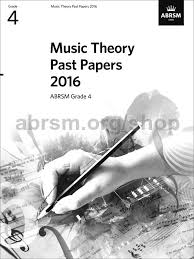 |
|
| ABRSM Music Theory Past Papers Grade 5 2012 |
 |
|
| ABRSM Music Theory Past Papers Grade 6 2013 |
 |
|
| ABRSM Nikki Iles Danny Boy ABRSM Piano Exam Grade 8 2023 Jazz Piano arr. inspired by Bill Evans |
 |
|
| ABRSM Nikki Iles Friends Book 1 Intermediate Jazz Pieces For Piano |
 |
ABRSM Nikki Iles Friends Book 1 Intermediate Jazz Pieces For Piano |
| ABRSM Nikki Iles Friends Book 2 Intermediate To Advanced Jazz Pieces For Piano |
 |
ABRSM Nikki Iles Friends Book 2 Intermediate To Advanced Jazz Pieces For Piano |
| ABRSM Nikki Iles The Elephant Parade ABRSM piano Exam |
 |
|
| ABRSM Piano 2025-2026 Grade 8 C3 A Nightingale Sang in Berkeley Square by Sherwin – Maschwitz |
 |
|
| ABRSM Piano Exam 2007-2008 Grade 3 |
 |
|
| ABRSM Piano Exam 2015-16 Grade 3 |
 |
ABRSM Piano Exam 2015-16 Grade 3 |
